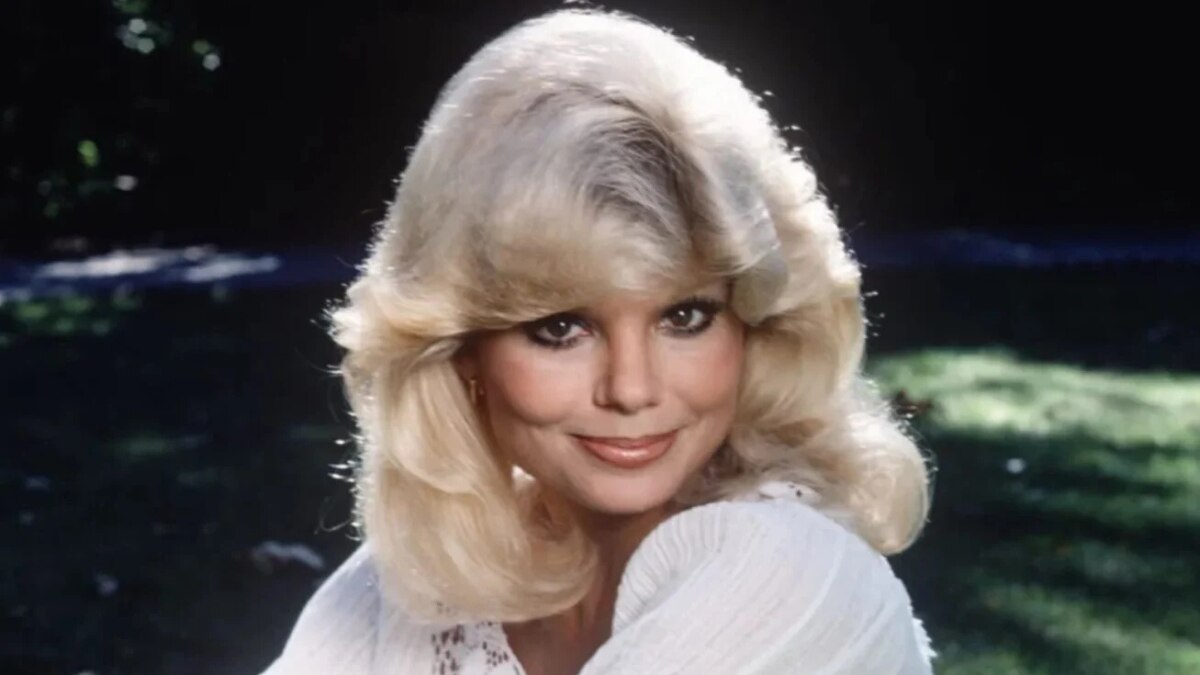Even in 2025, Loni Anderson’s name evokes more than just the glittering nostalgia of 1970s sitcoms—it conjures a distinct era when television began to blur the lines between glamour and substance. As WKRP in Cincinnati’s iconic Jennifer Marlowe, Anderson didn’t just play the “pretty receptionist.” She flipped the script, redefining how smart, composed, and self-aware women could exist in comedic spaces—without shedding their femininity or wit.
Rising alongside other 1970s sitcom icons, Anderson carved a space that few classic TV actresses navigated with such skill: embodying the archetype while quietly subverting it. From her Golden Globe-nominated performance to her fearless media presence in the 1980s, her career spanned comedy, drama, advocacy, and myth-making. And through it all, she became a cultural touchstone—not just for her beauty, but for her brains, timing, and unwavering presence.
This article explores Loni Anderson’s enduring impact—from her breakout years on WKRP to her quiet activism and influence on modern TV archetypes. We’ll also compare her legacy with contemporaries like Suzanne Somers and Farrah Fawcett to understand how she helped shape television’s golden age—and why her story still matters.
Breaking Out of the Shadows: How Loni Redefined the ‘Blonde Bombshell’ Archetype
Before she lit up living rooms as WKRP in Cincinnati’s Jennifer Marlowe, Loni Anderson spent years navigating the unforgiving maze of 1970s Hollywood. Guest spots on shows like S.W.A.T., Phyllis, and The Love Boat painted her as a familiar but typecast face—another beautiful blonde in an industry saturated with them. Casting directors saw her platinum hair and flawless features and rarely looked past them. But Anderson knew that “blonde” didn’t have to mean “dumb.”
Then came WKRP—and a now-legendary audition that changed everything. When producers set out to cast Jennifer Marlowe, they expected to find a classic ditzy secretary. Anderson came in with a new take: polished, poised, and sharp. Instead of playing to the stereotype, she flipped it. Jennifer was glamorous, yes—but she was also the smartest person in the room, and Anderson made sure that came through in every line, glance, and comedic beat.
Her casting redefined the “sex symbol with substance” in television. While many actresses were confined to one-dimensional roles, Anderson gave Jennifer agency, self-respect, and an unmatched sense of timing. It was a bold move in an era when women’s roles on sitcoms often served as punchlines—not power plays.
| Typical 1970s “Blonde” Roles | Loni Anderson’s Jennifer Marlowe |
| Naïve, air-headed, dependent | Intelligent, self-sufficient, commanding |
| Played for laughs | Delivered the laughs |
| Stereotype reinforcement | Stereotype disruption |
Through Jennifer, Loni Anderson didn’t just play a role—she reshaped what the role could be. And in doing so, she helped pave the way for future portrayals of women in sitcoms who could be both beautiful and brilliant.
Behind the Laugh Track: The Artistic Depth of Jennifer Marlowe
On paper, WKRP in Cincinnati’s Jennifer Marlowe might have seemed like just another decorative sitcom character—an attractive receptionist placed conveniently at the front desk. But what Loni Anderson created on screen was something far more enduring: a charismatic, commanding figure who quietly shifted the power dynamic of the show.
Through a careful blend of wit, warmth, and restraint, Anderson turned Jennifer into a study in contrast. She was consistently calm while the newsroom behind her spiraled into chaos. In scenes that could’ve been throwaway comedic beats, Anderson made deliberate choices: a well-timed pause, a raised eyebrow, a soft but razor-sharp retort. These were not accidents—they were calculated moves by a performer who understood the nuances of character-driven comedy.
Jennifer wasn’t just the heart of the station; she was its quiet brain. She managed awkward bosses with grace, disarmed flirtation with unshakable dignity, and offered support to colleagues without sacrificing her autonomy. Anderson infused her with empathy and quiet strength, capturing a kind of sitcom feminism that was rare in the late ’70s.
Loni Anderson on Jennifer:
“She was smarter than everyone else in the room—on purpose.”
Her chemistry with the ensemble cast made her presence feel essential—not ornamental. Scenes with Gary Sandy’s Andy Travis, Howard Hesseman’s Dr. Johnny Fever, or Frank Bonner’s bumbling Herb Tarlek revealed how Jennifer played the emotional and moral center of the series, often without raising her voice.
In a landscape dominated by loud personalities, Anderson’s Jennifer stood out by not demanding attention—she earned it. That quiet power made her one of the most artistically compelling characters of her era, and one of television’s earliest icons of female empowerment in comedy.
Glamour with Grit: Surviving the Spotlight in 1980s Hollywood
As WKRP in Cincinnati wrapped in 1982, Loni Anderson found herself at a critical crossroads. With beauty that made headlines and a breakout role behind her, the industry was watching to see if she’d fade into the background like so many sitcom darlings—or evolve. Anderson chose the latter.
She took on ambitious roles that defied expectations, starring in TV movies like Sizzle and A Letter to Three Wives, and later co-leading Partners in Crime alongside Lynda Carter. These weren’t safe choices—they were dramatic, stylized, and often demanded more than the industry gave actresses, best known for comedy. Yet critics often overlooked the work, focusing instead on her personal life.
Nowhere was the spotlight harsher than during her highly publicized relationship and eventual marriage to actor Burt Reynolds. The union—tabloid gold in the 80s—subjected Anderson to relentless speculation. Headlines painted her alternately as a trophy wife, a diva, or a victim of celebrity drama. But behind the headlines, Anderson pushed back with grace and clarity, often correcting the record in interviews and maintaining a carefully guarded sense of dignity.
Her resilience in the face of 1980s tabloid culture is part of what makes her legacy so lasting. Anderson refused to be reduced. She transformed from an “it girl” into a seasoned, self-possessed performer who navigated Hollywood not with scandal, but with strategic elegance.
A Pioneer in a Pearlescent Suit: Loni’s Quiet Activism and Public Advocacy
Long after the cameras stopped rolling on WKRP, Loni Anderson found a new calling—not in character, but in cause. While never the loudest voice in the room, Anderson became a persistent and passionate advocate for issues close to her heart, particularly COPD awareness, elder care, and women’s visibility in aging media spaces.
Her advocacy work began at home—literally. When her parents were diagnosed with chronic obstructive pulmonary disease (COPD), Anderson took on a caregiving role that would later inspire her national platform. Partnering with the National Lung Health Education Program and COPD Foundation, she launched campaigns to spread awareness about this often-misunderstood disease. Her messaging was simple yet profound: early diagnosis can save lives, and stigma should never silence a loved one’s suffering.
But her public service didn’t stop with health. As she aged in an industry obsessed with youth, Anderson challenged ageism in Hollywood—not by shouting at the system, but by staying in it. Whether walking red carpets with poise in her 60s or guest-starring on television into her 70s, she redefined what visibility for women over 50 could look like. Her interviews often highlighted the need for more nuanced roles for older women, and she encouraged younger generations of actresses to “age like they mean it.”
In a culture where celebrity advocacy often veers toward performative, Anderson’s was lived, consistent, and deeply personal. Her causes weren’t press releases—they were reflections of experience, empathy, and earned authority.
How Loni Stacked Up Against Her Golden Age Peers
The late 1970s and early 1980s were a golden era for female television stardom. Blonde, poised, and captivating, Loni Anderson rose alongside household names like Suzanne Somers, Farrah Fawcett, and Linda Evans. While they all shared the spotlight—and similar public expectations—their paths, personas, and cultural footprints tell distinct stories.
Suzanne Somers, best known as Chrissy Snow on Three’s Company, brought bubbly energy and slapstick charm to a comedic archetype. But unlike Anderson’s Jennifer Marlowe, Chrissy’s humor often hinged on airheadedness, reinforcing a different “dumb blonde” trope. Somers’ legacy later pivoted toward wellness entrepreneurship rather than continued acting.
Farrah Fawcett became an overnight icon with Charlie’s Angels, her image cemented by that famous red swimsuit poster. Though her dramatic acting chops came later in roles like The Burning Bed, her early fame was rooted more in visual iconography than in scripted nuance.
Linda Evans, meanwhile, thrived in the prime-time soap universe, especially on Dynasty as Krystle Carrington—a role rooted in elegance and emotional resilience, but not comedic timing.
In contrast, Loni Anderson’s strength was in precision comedy and understated control. She could hold her own in an ensemble cast without overpowering it, and her character didn’t need melodrama or action scenes to command attention. Jennifer Marlowe was a revolution in subtlety: sexy and smart, comedic and composed.
Star Comparison Table
| Star | Breakout Role | Genre Strength | Legacy Marker |
| Loni Anderson | WKRP in Cincinnati | Smart sitcom comedy | Redefined the “blonde bombshell” trope |
| Suzanne Somers | Three’s Company | Physical comedy | Wellness mogul, pop culture icon |
| Farrah Fawcett | Charlie’s Angels | Action-drama | Beauty icon turned dramatic performer |
| Linda Evans | Dynasty | Prime-time soap opera | Graceful longevity in dramatic storytelling |
Anderson’s legacy may not scream the loudest—but it resonates the longest, especially among audiences who value subtlety, intelligence, and transformation in their stars.
The Legacy Effect: TV Tropes Loni Anderson Helped Create (and Break)
Long before The Office gave us Pam Beesly or Mad Men introduced Joan Holloway, there was Jennifer Marlowe—a character who quietly transformed how television portrayed the “attractive secretary.” Before WKRP in Cincinnati, secretarial roles were often played for laughs or written as background filler: flirtatious, flaky, and firmly in the shadow of male leads. But Loni Anderson flipped that script with Jennifer—a character who was not only beautiful but fiercely competent, self-aware, and emotionally intelligent.

Her performance redefined a TV archetype, proving that a woman could embody glamour without sacrificing power. In NewsRadio, characters like Catherine Duke and Beth displayed similar confidence and quirkiness, while in The Office, Pam’s emotional intelligence and quiet control echoed Anderson’s understated authority. Even the seductive, strategic intelligence of Joan Holloway on Mad Men carries a trace of Jennifer’s DNA—poised femininity used not for manipulation, but survival and influence.
In university-level media and communications courses, Anderson’s role is increasingly cited as an early example of gender subversion in sitcoms. Her portrayal anticipated conversations around feminism in popular culture, as Jennifer refused to be the butt of a joke or the prize to be won. Instead, she was a fully realized character in control of her space.
Through a single role, Anderson helped evolve the trope from accessory to anchor. She didn’t just play a secretary—she played the standard that future characters would emulate, challenge, or complicate for decades to come.
“I Met Her Once…” — A First-Person Encounter That Changed My View
I met Loni Anderson in 2016 at a charity gala for COPD awareness in Los Angeles—a cause close to her heart. As a freelance entertainment journalist, I’d covered dozens of red carpets, met plenty of TV legends, and honestly, I expected another brisk smile-and-nod encounter. But Loni was different.
When I introduced myself, she held my gaze and asked about my connection to the event. I told her my grandfather had suffered from COPD. She didn’t pivot the conversation to her own story or her media talking points—she just listened. Then she said something simple that stuck with me: “You carry people like that with you forever, don’t you?”
That moment wasn’t for the cameras. There were no photographers around. Just two people, talking about loss.
What struck me most was her off-screen grace. The poise she brought to WKRP in Cincinnati’s Jennifer Marlowe wasn’t an act—it was an extension of who she truly is. Loni Anderson wasn’t just a 1970s sitcom icon. She was, and remains, a woman of warmth, intellect, and integrity.
Meeting her didn’t just change how I saw her—it changed how I understood the power of presence, even after the spotlight fades.
Why Loni’s Story Still Matters Today
In an industry where fame is often fleeting, Loni Anderson’s story remains remarkably durable. Her professional impact—as the poised, razor-sharp Jennifer Marlowe—helped reshape how women could be portrayed in sitcoms. But just as lasting is her integrity, evident in the way she navigated public scrutiny, championed health awareness, and advocated for women aging in entertainment.
Today’s industry is reckoning with many of the same issues Anderson confronted decades ago: representation, reinvention, and the pressure of image. What sets her apart is that she met those challenges with quiet resilience rather than spectacle. Her legacy offers modern actors—especially women—a roadmap for how to stay relevant without losing authenticity.
She taught us that beauty and intelligence are not mutually exclusive, that comedy can be dignified, and that aging doesn’t mean vanishing. In the canon of women in media history, Loni Anderson’s chapter is one of evolution, not just fame.
If you’ve never watched WKRP in Cincinnati, or haven’t revisited it in years, now’s the time. Jennifer Marlowe is more than a nostalgic character—she’s a blueprint for modern TV heroines. And Anderson herself? She’s still gold.
Nishant Wagh is the founder of The Graval and a seasoned SEO and content strategist with over 15 years of experience. He writes with a focus on digital influence, authority, and long-term search visibility.





4 thoughts on “The Golden Era Icon: Loni Anderson’s Enduring Legacy in TV History”